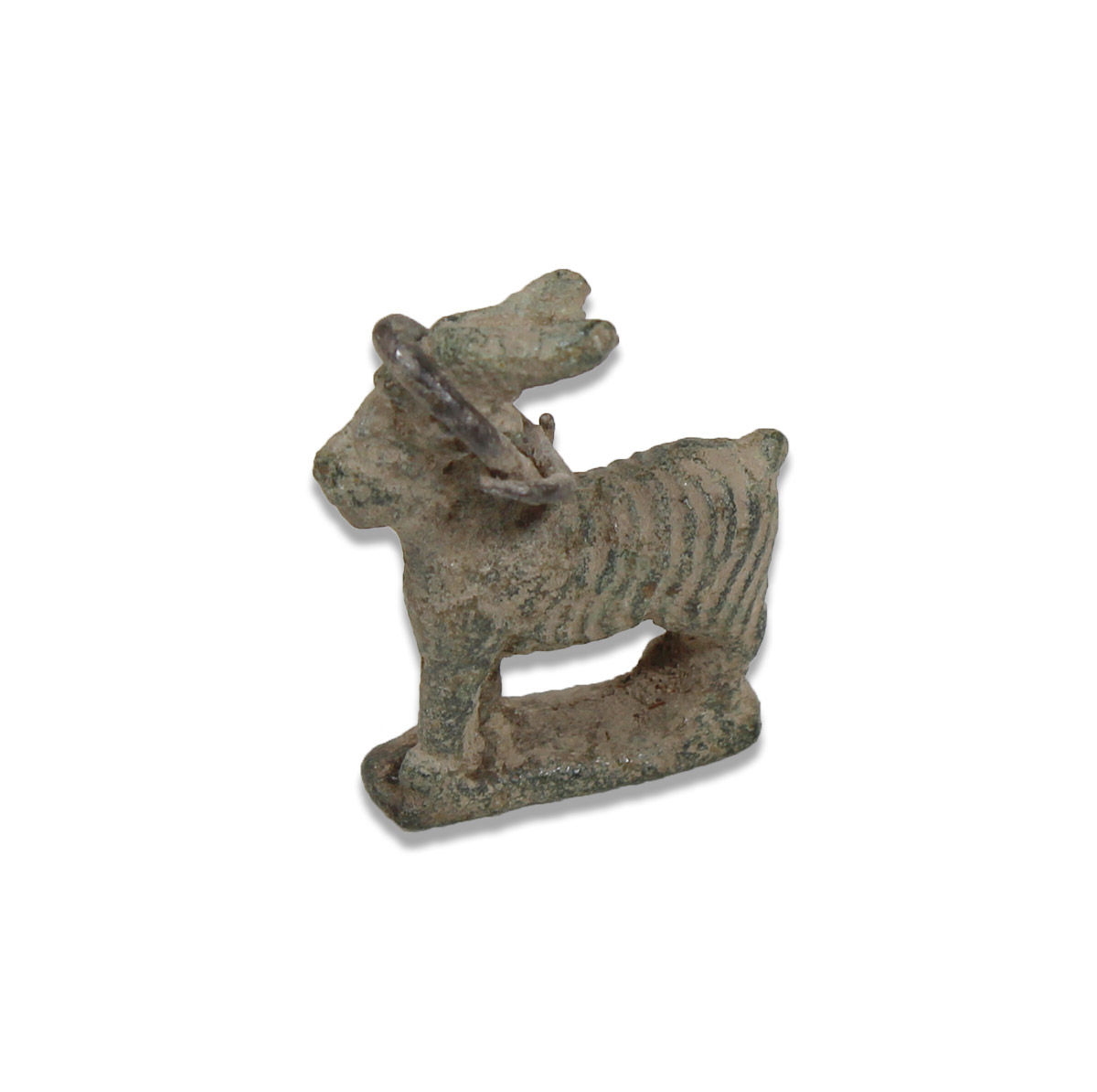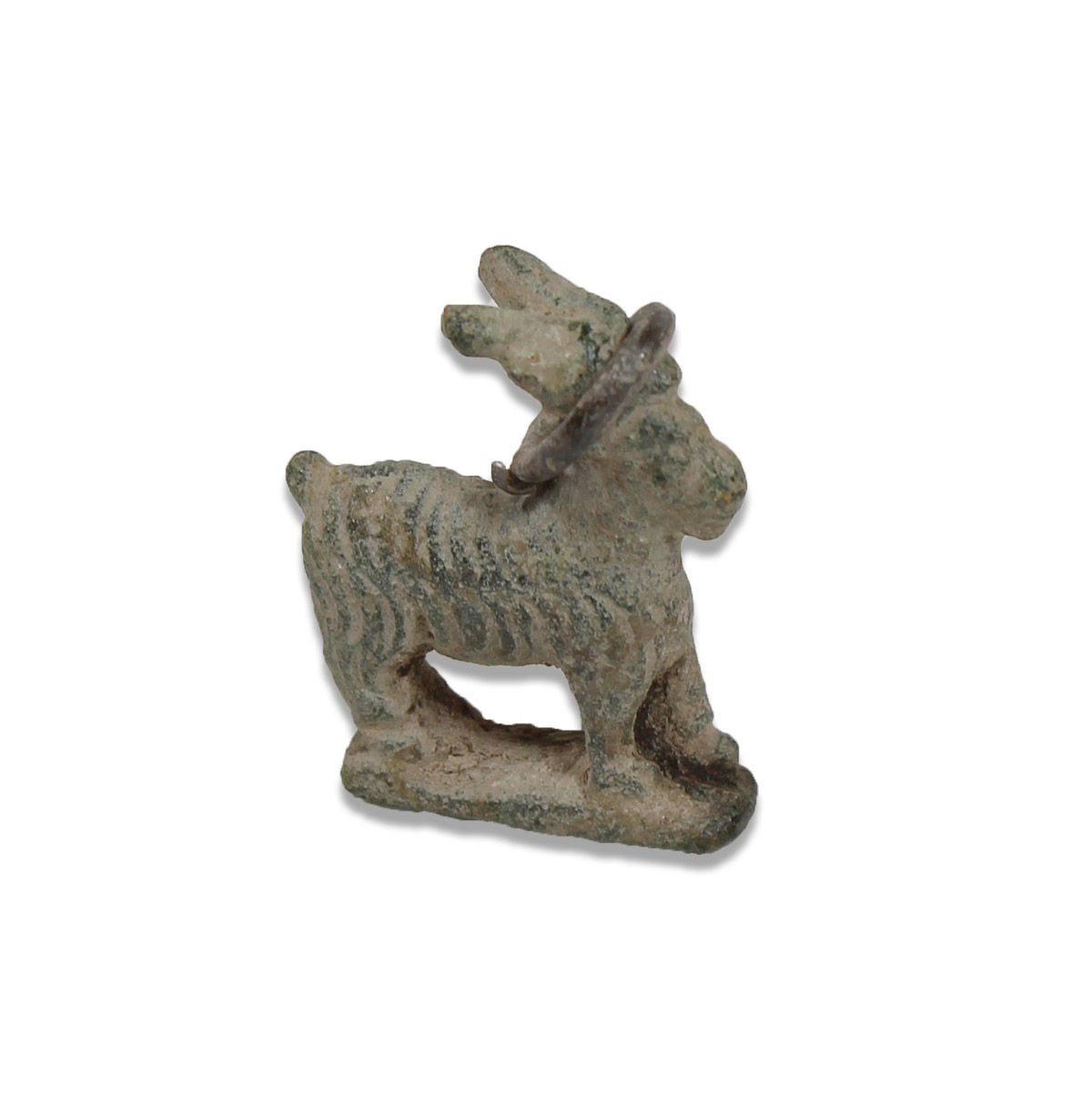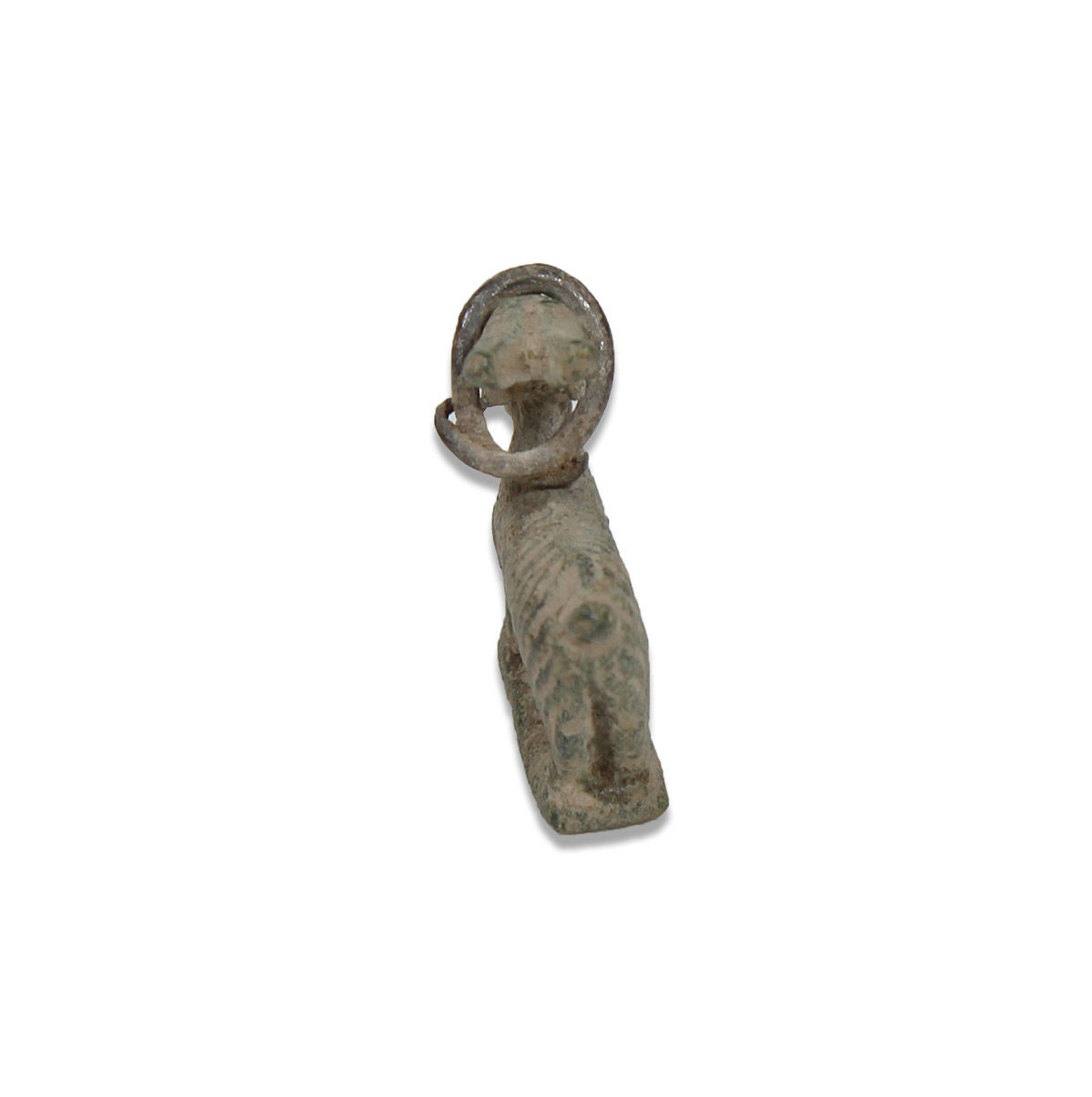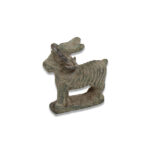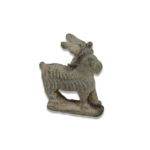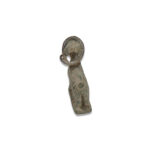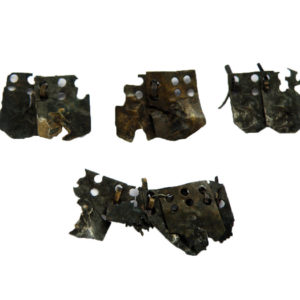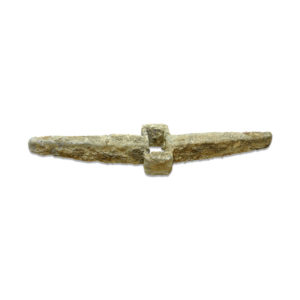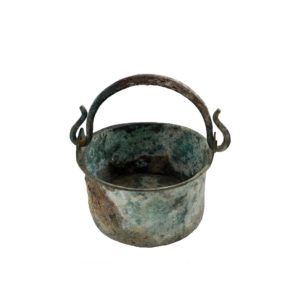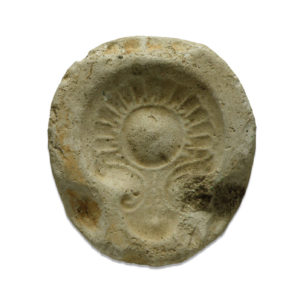Description
| ITEM | Statuette of a ram |
| MATERIAL | Bronze |
| CULTURE | Roman |
| PERIOD | 1st – 3rd Century A.D |
| DIMENSIONS | 27 mm x 23 mm |
| CONDITION | Good condition |
| PROVENANCE | Ex Spanish private collection, acquired between 1960 – 1970 |
In Egypt, the ram was a symbol of the god Amun of Thebes, and is related to other eastern deities. In Greek and Latin mythology, it appears in various legends such as those of Jason and the Argonauts, Poseidon, Theophanes and the Atamante. Together with the lambs, they play an important role in the Etruscan divinatory art: this paragraph from Macrobius confirms it “if the wool of a lamb or ram is stained with purple or gold, it is for the prince the ordo senatorial, an omen and guarantee of happiness, glory and power” – Saturn. 111, 7, 2-. These animals were also used as victims in sacrifices to the gods.
Animals such as goats and sheep carried similar connotations in Ancient Rome. Often associated with Faunus, sheep and goats were symbols of rustic life and earthly qualities, sometimes sharing Faunus’ links with sexuality, with rams sometimes extended to a symbol of fertility. As a common choice for ritual sacrifice, sheep also appear as an image of piety and devotion to the gods.


